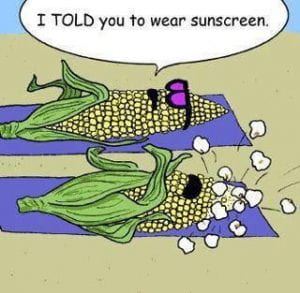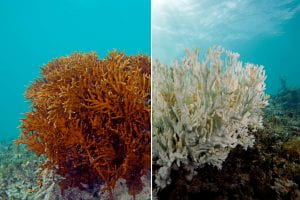Hey urban nomads! Being in sunny island Singapore, I’m sure we all can’t live without sunblock especially when we are heading to the beach for some fun as sunblock protects us from the harmful UV rays.
However, did you know that certain countries have banned the use of sun cream? Given the benefits that sun cream can bring the humans, the fact that it is banned shows how much harm we are causing the environment.
Palau has become the first nation to ban sun cream which contains components such as oxybenzone as it cause harm to coral reefs and other marine creatures (Oppenheim, 2020). The country also bans the application and selling of sun cream. Tourists found to have sun cream will be fined.
Given that Palau is a tourist hotspot and is known for diving, how can tourists forgo sun cream after a day of sun tanning? Well this goes to show how detrimental the impacts of tourism is for the country to take such drastic measure. The International Coral Reef Foundation explained that the banned chemicals were a form of environmental pollutant and are toxic to juvenile stages of many wildlife species (Oppenheim, 2020).

Summary of harmful effects of sun cream
Sun cream can enter the marine environment as the sun cream applied might not stay on the skin and when tourists swim, sun cream may wash off as well (US Department of Commerce, 2018).
Oxybenzone has been known as a threat to coral reefs and approximately 14,000 tons of sun cream is released into areas with coral reefs annually (Schneider & Lim, 2019). Coral larva is the most susceptible to pollutants since it is still growing as compared to coral that grows slowly since it has lower bioaccumulation rates.
When coral reefs face oxidative stress from pollutants, they expel algae from the surface and turn the coral white, which is also known as bleaching. When a coral suffer from bleaching, it is not dead. Corals can survive a bleaching event although they are under more stress and subjected to mortality.
Aside from harmful effects to the corals, sun cream and its oxybenzone concentrations can lead to decreased egg production and fewer hatchings in a laboratory study done on rainbow trout and medaka (Schneider & Lim, 2019). Besides, the presence of vitellogenin in male fish, which is a precursor protein of egg yolk found only in females, means that there is implications on reproduction (Schneider & Lim, 2019).
Although concentrations present in fish are low, bioaccumulation and biomagnification must be considered. Bioaccumulation refers to the phenomenon where chemicals reach higher concentration in the organism over time whereas biomagnification means that chemicals become more concentrated and damaging as one moves up the food chain. This means that humans who ingest seafood can potential be consuming the pollutant as well.
Isn’t it ironic that something that could benefit the health of humans, when overdosed, will cause damage to our environment and indirectly harm us as well? Given the above evidence, there has been growing alternative for “reef friendly” sun cream and while these options are usually in the form of mineral sun cream and have been marketed as environmentally friendly in the media, new research has shown that they are actually no safer for coral reefs and lack tests on marine organisms (Treviño, 2018). Thus the question remains – can we produce a sun cream that is protects humans and the environment?
References
Oppenheim, M. (2020, January 01). Pacific Island nation Palau becomes first country in the world to ban ‘reef-toxic’ sun cream. Retrieved October 30, 2020, from https://www.independent.co.uk/news/science/palau-sun-cream-ban-coral-reef-pollution-dying-water-life-a9266726.html
Schneider, S. L., & Lim, H. W. (2019). Review of environmental effects of oxybenzone and other sunscreen active ingredients. Journal of the American Academy of Dermatology, 80(1), 266-271. doi:10.1016/j.jaad.2018.06.033
Treviño, J. (2018, July 16). Can We Create Sunscreen That Protects Both Humans and Coral Reefs? Retrieved November 02, 2020, from https://www.smithsonianmag.com/science/scientists-are-unraveling-new-dangers-sunscreen-coral-reefs-180969627/
US Department of Commerce. (2018, November 01). Sunscreen Chemicals and Coral Reefs. Retrieved October 30, 2020, from https://oceanservice.noaa.gov/news/sunscreen-corals.html


